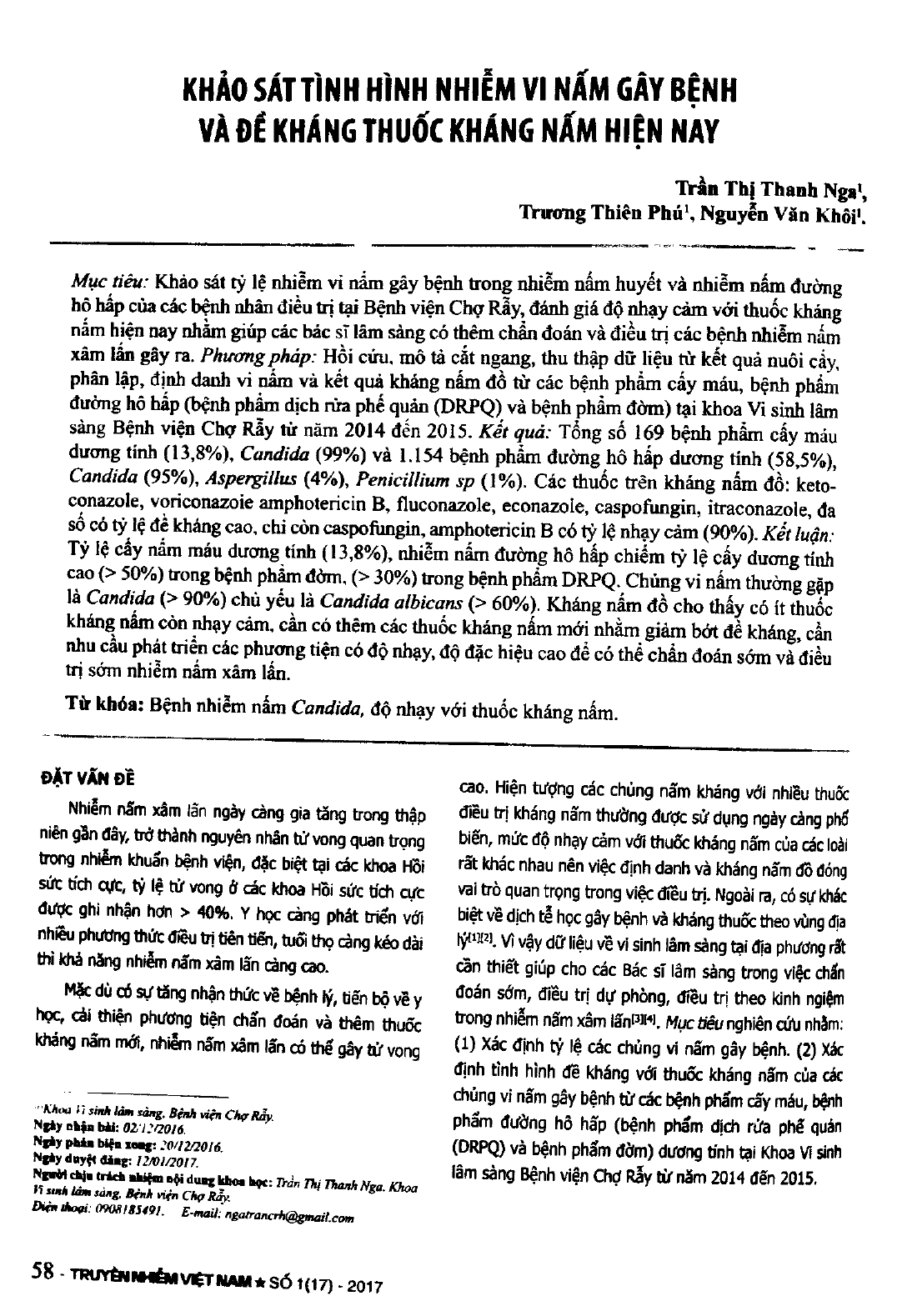
Tỷ lệ cấy nấm máu dương tính (13,8 phần trăm), nhiễm nấm đường hô hấp chiếm tỷ lệ cấy dương tính cao (50 phần trăm) trong bệnh phẩm đờm, (30 phần trăm) trong bệnh phẩm DRPQ. Chủng vi nấm thường gặp là Candida (90 phần trăm) chủ yếu là Candida albicans (60 phần trăm). Kháng nấm đồ cho thấy có ít thuốc kháng nấm còn nhạy cảm, cần có thêm các thuốc kháng nấm mới nhằm giảm bớt đề kháng, cần nhu cầu phát triển các phương tiện có độ nhạy, độ đặc hiệu cao để có thể chẩn đoán sớm và điều trị sớm nhiễm nấm xâm lấn.
Objectives: Survey prevalence of fungal pathogens from specimens of the respiratory tract in patients hospitalized at Cho Ray Hospital, evaluate the sensitivity of current antifungal drugs in order to help clinicians improve more diagnosis and treatment. Method: Retrospective, cross-sectional descriptive, collect results data from cultured isolates, fungal identification and antifungal results from specimens of the respiratory tract at Clinical Micro-biology at Cho Ray Hospital 2014 to 2015. Results: Total 169 positive blood cultures (13.8 percent), Candida (99 percent) and 1,154 respiratory specimens positive (58.5 percent), Candida (95 percent), (4 percent) Aspergillus, Penicillium sp (1 percent). The anti-fungal drug test: Ketoconazole, Voriconazoie Amphotericin B, Fluconazole, Econazole, Caspofungin, Itraconazole mostly have high resistance rate, 'only Caspofungin, Amphotericin B has (90 percent) sensitivity rate. Conclusion: Fungal infection from the respiratory tract positive has high proportion ( 50 percent) in the sputum, ( 30 percent) in bronchoalveolar lavage (BAL). Common strains of Candida ( 90 percent) are mainly Candida albicans ( 60 percent). There are also less sensitive to antifungal drugs, and a need for more new antifungal drugs to reduce the resistance. There is also a need to develop tests that have high sensitivity and specification in order to be able to diagnosis and apply treatment early for infection invasive fungal.
- Đăng nhập để gửi ý kiến
